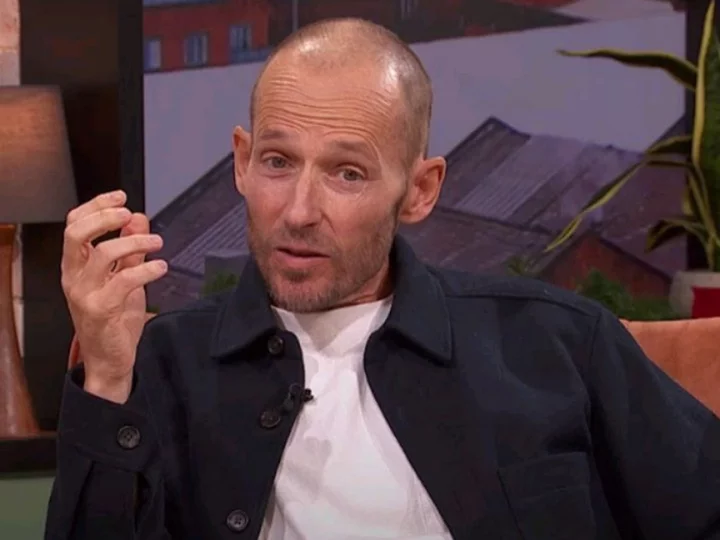
Jonnie Irwin ‘removes himself’ from family home amid terminal cancer battle
Jonnie Irwin has revealed that he sometimes “removes himself” from his family home to go to a hospice while he continues to live with terminal cancer. The A Place in the Sun presenter, 49, first went public with his diagnosis of lung cancer last year after discovering the disease had spread to his brain. He currently lives with his wife, Jessica Holmes, and their three children, Rex, three, and twins Rafa and Cormac, two. However, Irwin admitted that sometimes the pain he experiences makes him “not good to be around”. Speaking to Hello! magazine, the TV host said: “I remove myself on a number of occasions because I’m not good to be around when I’m in pain. “I’m like a bear with a sore head and I don’t want [my family] to be around that.” Irwin has previously spoken candidly about how the pain his illness causes affects his moods. Speaking on the podcast OneChat last month, he said: “I have been close to death’s door, twice at least. “You lose your memory, you lose your patience. I have got a very short temper. It’s not made me a better person, that’s for sure.” This week, Irwin also opened up about why he hasn’t yet told his sons about his terminal cancer. He said it would be difficult for them to understand the situation due to their young age. “I keep being asked, ‘Are you going to tell them?’ but tell them what?” he said. “It would be horrible news that they’d have to get their heads around. And it would confuse the hell out of Rex – he’s got a shocking enough day coming. Let’s bury our heads in the sand for as long as possible.” After publicly revealing his condition, the Escape to the Country host said he was worried that his children will not remember him if he died last year because they’re “too young”. He told The Sun: “Every time something really nice happens with them, I have this thing knocking at my door, saying, ‘Don’t get too happy because you’re not going to be around much longer’. “Then I think, they’re not going to remember me, they’re really not. They’re too young and if I die this year, there’s no chance they will have memories.” In early June, Irwin was admitted to hospital to be “monitored” due to a “changeover in my pain management regime”. Read More Thirty, flirty and declining: How 30 became a terrifying milestone for an anxious generation Woman who went from size 18 to size six shares surprising things ‘no one tells you’ about weight loss Vegan family writes letter to neighbours requesting they close their windows when cooking meat Jonnie Irwin ‘removes himself’ from family home amid terminal cancer battle Jonnie Irwin explains why he hasn’t told his sons about his terminal cancer A Place In The Sun’s Jonnie Irwin admitted to hospital amid terminal diagnosis
1970-01-01 08:00

Vanderpump Rules alum Stassi Schroeder admits she wants to ‘try’ Ozempic after giving birth
Vanderpump Rules alum Stassi Schroeder has admitted she wants to “try” taking Ozempic after giving birth to her second child. The former reality star, 34, recently appeared on Alex Cooper’s Call Her Daddy podcast, where she spoke candidly about wanting to take the type 2 diabetes medication – which has often been prescribed as an “off-label” weight loss drug. “Oh, my God, I really want to try it when I give birth,” the Next Level Basic author told Cooper during Wednesday’s podcast episode. “The amount of times I’ve researched this being like, I mean, I think it’s safe and healthy. Like, I think it’s good for you. It’s like taking vitamins.” The Call Her Daddy host told listeners that “nothing that was said on this podcast” should be taken as serious medical advice,as she jokingly added: “Please do not listen to this.” Schroeder went on to explain why she’s curious about taking the once-weekly semaglutide injection, which works by mimicking a hormone that regulates appetite and creates the feeling of fullness, once she welcomes baby number two. “[After] my first pregnancy, I ate bone broth for dinner for six f***ing months after I gave birth, and I kind of don’t feel like doing that again. Like, I don’t want to,” she said. The Off With My Head author shares two-year-old daughter Hartford with husband Beau Clark. In March, Schroeder announced the couple were expecting a baby boy due in September. Much like Amy Schumer, Schroeder also called on fellow celebrities to be “transparent” and “honest” about some of the methods they take to lose weight. “Anyone who hears about Ozempic has to f***ing be curious,” she said during the podcast. “You are a liar if you tell me that you have not thought about it, thought about jumping on that train.” “Have I Googled Ozempic and what it would be like, and am I thinking about it? Yes, I am.” This week, actor and comedian Amy Schumer admitted to taking Ozempic last year to help lose weight. However, Schumer stopped taking the FDA-approved medication because of its side effects. “I was one of those people that felt so sick and couldn’t play with my son,” Schumer told host Andy Cohen on Watch What Happens Live. “I was so skinny and he’s throwing a ball at me and [I couldn’t].” Although the Trainwreck star ultimately decided that Ozempic wasn’t “livable” for her, she did take a moment to call out celebrities who have been “lying” about taking the once-weekly antidiabetic injection for weight loss. “Everyone’s like: ‘Smaller portions,’” she joked. “Shut the f*** up. You’re on Ozempic, or one of those things.” Ozempic has skyrocketed in use after people were reportedly prescribed the type 2 diabetes medication as an “off-label” weight loss drug. Due to its weight loss side effects, the increased demand has sparked a global shortage of Ozempic, leaving actual diabetics without the medication. While Ozempic is used for the treatment of diabetes, popular drugs like Wegovy and Moujaro are similar once-weekly semaglutide injections specifically approved for the treatment of obesity and weight loss. Last month, Stassi Schroeder’s former Vanderpump Rules co-star Brittany Cartwright shut down speculation that she lost weight by taking Ozempic. Fans began speculating that Cartwright was using the type 2 diabetes medication after she shared a selfie to her 1.6m Instagram followers, in which the reality star posed in a mirror wearing cycling shorts and a baggy T-shirt. “Totally ozempic,” one person claimed, as others remarked that it looked like Cartwright had “lost weight”. Cartwright then addressed the rumours directly, clarifying that the reason she may look slimmer is because of the iPhone camera setting she used to take the picture. “It’s actually the .5 zoom on the iPhone camera lol,” she wrote in the comments. Fellow Bravo personality and Real Housewives of Beverly Hills star Crystal Kung Minkoff has also said that although she hasn’t taken the drug, she has been tempted and “thought about it”. Read More Amy Schumer says she stopped taking Ozempic because of side-effects What is ‘Ozempic face’? Doctors warn about facial ageing side effect of diabetes medications Vanderpump Rules star Brittany Cartwright addresses rumours she’s taking Ozempic for weight loss Mother reveals ‘one regret’ after parent refused to give her child cake amid debate My teenager gets all their news from TikTok – should I worry? Jonnie Irwin ‘removes himself’ from family home amid terminal cancer battle
1970-01-01 08:00
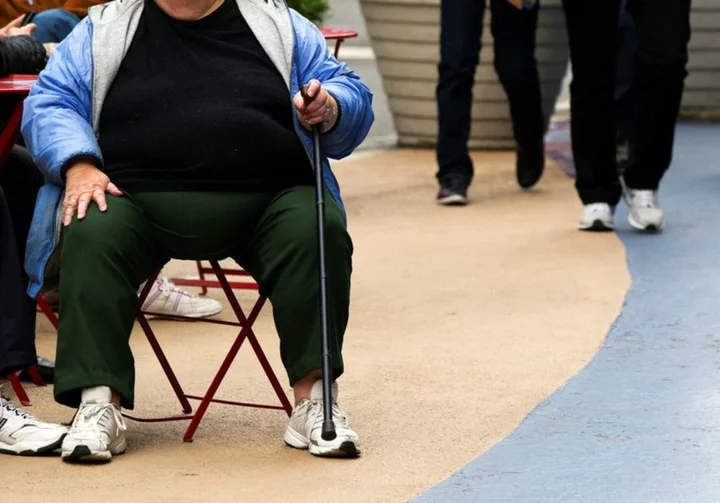
US doctors' group adopts new policy on healthy weight assessment
By Nancy Lapid The American Medical Association (AMA) on Wednesday said it will advise doctors to pay less
1970-01-01 08:00
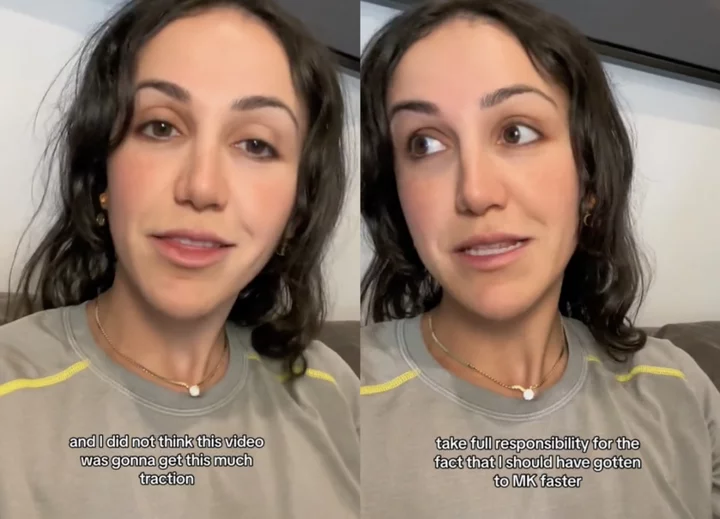
Mother reveals ‘one regret’ after parent refused to give her daughter cake amid viral debate
A mother has revealed the “one regret” she had after a parent refused to give her daughter a slice of cake. The parent, Kat Stickler, shared a follow-up video amid the now-viral debate about how her child joined a birthday party in a park. In her initial video – which has more than 13.7m views so far – Stickler said that a parent grabbed a plate from her daughter, MK, while she was on line for cake at the park. The woman allegedly told the three-year-old that she couldn’t eat the dessert, and that other kids at the party were “not her friends”. In her most recent clip, Stickler addressed how people had been reaching out to her, before sharing the one thing that she wished she did differently in the situation. “I wanted to take full responsibility for the fact that I should have gotten to MK faster,” she said, referring to when her daughter was waiting to get cake at the party. “That’s my one regret. That I did not get to her before she could grab the plate.” Stickler noted that her issue was “not with this person” who didn’t let “[her] kid have cake”. “She wasn’t invited to the birthday party. She had just met these kids,” she explained. “I get that, don’t give her cake.” The mother then explained that the main problem she had was with the way that the parent spoke to MK. “It’s getting down to a level and telling a three-year-old girl that those aren’t your friends,” she said. “It was cruel, unnecessarily, in my opinion. Like just tell her she can’t have cake, OK.” She added: “We don’t have to share our cake, but we should be nice to three-year-old kids.” As of 14 June, the follow-up video has more than 2.4m views, as TikTok users in the comments questioned people who didn’t understand that Stickler initially had a problem with the stranger’s remark to MK. “The fact that this wasn’t immediately clear to everyone from the beginning is CRAZY to me!!! #itwasneveraboutthecake,” one wrote, while another agreed: “Imagine needing to explain this to full adults….” @katstickler Also thank you all so much for all the love, support, and cake you’ve sent ????? ♬ original sound - Kat A third wrote: “Actually, the ONLY thing that mom should have said to MK is, ‘Please ask your mommy if it’s ok.’ In case of allergies.” Other people noted that they still would’ve given MK cake at the party, despite the fact that she wasn’t invited in the first place. “Idk… I would’ve gave her a piece of cake just because that’s how I grew up. If we had enough we gave, always,” one wrote. “Sure but also I’ve never been to a party where there wasn’t half a cake left after everyone already had what they wanted,” another added. In her initial video posted last week, Stickler sparked a viral debate when she revealed that MK introduced herself to a group of children at a party in a park. “She’s one of the group right now. They’re welcoming her with open arms,” she said. “Or, so I thought.” As MK joined the line of kids getting cake, Stickler said that she decided to follow her “to make sure it’s OK, as a formality”. “Honestly, I was like, obviously it’s OK. It’s cake. It’s a massive cake. There’s lots of leftover pieces,” she explained. @katstickler No cake for me thanks, I’m full…of rage? ♬ original sound - Kat However, Stickler then shared that the party host stepped in and stopped her daughter. “The mother takes the plate away from MK, and gets down to her level, says: ‘You cannot eat this cake, OK. This is not your birthday party. These are not your friends. Where’s your mother?’” Speaking to Today last week, Stickler noted that after this situation happened, she took her child to get ice cream. She also said that MK was “totally fine” after hearing the parent’s comment. “People have been asking me, ‘What did you say to the mom?’ The mom was literally the least of my concerns,” she explained. “I was worried about MK.” The Independent has contacted a representative for Stickler for comment. Read More Mother hit with deluge of abuse for taking toddler’s packed lunch to a restaurant Mother sparks viral debate for ‘shaming’ parent who refused to give her daughter a slice of cake Mother and six daughters wear their wedding dresses out to dinner: ‘Yearly tradition’ Mother sparks debate over parent who wouldn’t give daughter cake Drew Barrymore slams tabloids that claimed she ‘wished’ her mother was dead Drew Barrymore speaks out about parents and how she financially supports her mother
1970-01-01 08:00

My teenager gets all their news from TikTok – should I worry?
Journalists are no longer the gatekeepers. The reality is that many young people are now bypassing the websites and apps of traditional news outlets and seeking information on social media platforms, including TikTok. It’s the ‘fastest growing social network’, according to the Reuters Institute Digital News Report, and new research has found that 20% of 18-24 year olds use the app solely to find their news. While a massive 44% of that age group use the short-form video hosting service for any and every other purpose. The younger generation have “little interest in many conventional news offers oriented towards older generations’ habits, interests, values, and instead embrace the more personality-based, participatory, and personalised options offered by social media”, said Reuters Institute director Rasmus Nielsen. Under 18s are big users too, so for parents whose teens get their news via TikTok, what do you need to understand about the social network and the evolution of digital media literacy? What is TikTok? Every so often a new app emerges and redefines the way we use social media. It’s what TikTok went and did in 2016. Starting as a small niche social media network – founded by Chinese tech giant Zhang Yiming – that attracted lip-synching teens as a short-form video hosting site, it almost knocked Facebook off its perch, and blew up during the coronavirus pandemic to a mega global platform. Do news organisations share news on it? Yes, they do. In many ways, traditional news organisations were forced to join TikTok to avoid being left behind, reach new and younger audiences and ensure they are continuing to find creative ways to pivot in a constantly evolving digital space. “Given the popularity and high engagement level, it’s not surprising that TikTok has become an important news platform for younger audiences, and it makes sense that news organisations are using it,” said Mark Brill, a senior lecturer in Future Media at Birmingham City University. “This, however, is a continuation of an existing trend. For well over a decade social media such as Facebook has been the primary news source for under 25s.” Anna Lee, founder at the Fr. App, added: “We can see that Gen Z individuals are turning to TikTok for any and all searches. While the funniest sound bites and newest dance trends will always have a home on TikTok, you can also equally expect to find videos explaining an arbitrary housing act.” How is it shared? There are various types of videos that can be shared on TikTok. Alongside the short bite-sized videos sharing the latest news, you can share trending sounds, things creators have posted, or videos with friends, family, and your larger community within TikTok or through other social media platforms. Videos can also be shared directly to other users, as long as the user has allowed for it. How do algorithms work? The TikTok algorithm is a recommendation system that determines which videos will appear on your (unique and highly personalised) For You page, which is also known as the homepage. Brill, who has 25 years of experience applying emerging technologies to engage audiences, said: “Much of the success of TikTok is the way that their algorithm decides which videos to show their users. TikTok’s system is based entirely on their interests and previous viewing. “This ‘more of what you like’ approach means that users spend more time each month in TikTok than any other platform. In the UK it adds up to over 27 hours per user per month and 23 hours globally. It shows how the platform’s algorithm can be highly addictive.” Is it OK that TikTok is how young people learn about what’s happening in the world? Some experts believe it is important for young people to be taught digital literacy at an increasingly earlier age – especially with the prevalence of fake news and artificial intelligence and its ability to forge fake articles and pictures. “Users of TikTok and all other social media apps must understand how to evaluate every piece of information they come across,” Lee said. “All parents worry about their child viewing harmful content on the internet. However, most leading internet providers provide extensive parental controls, including blocking and filtering unsuitable content.” Should they be encouraged to look elsewhere? For Brill, there are both benefits and challenges from using social media as a news source. He also cites the recent Reuters Institute report, which noted that TikTok users tend to look for good-news stories, avoiding the ‘doom scrolling’ found in web-based internet sites, which can have a negative impact on mental health. “The big question with social media sources, however, is that of veracity. A lack of fact checking and or acknowledgment of authoritative sources makes it difficult to identify fake stories and information. The short-form video format does not bring an in-depth analysis, where opinions are often presented as fact,” he said. “Perhaps the biggest challenge for TikTok users is with the algorithm itself. By giving more of what they like, it leads to confirmation bias that reinforces existing perceptions.” While child and behavioural expert Amanda Jenner, would encourage parents to tell their children to look elsewhere. “I am not a believer in directing children to learn through TikTok at all. Children can easily become addicted to social media and [it] can quickly escalate and [they could] be looking at other things they shouldn’t be watching. “I genuinely do feel parents need to be worried. I would encourage parents to set an age where it’s acceptable to have TikTok (over the age of 13 preferably) and have a parental control app so you can monitor and control what both they are seeing and the amount of time they spend on [it]. They need to be safeguarded.” Who knows what social network will be the next big thing but right now it’s difficult to get young people to migrate to another platform. Read More Charity boss speaks out over ‘traumatic’ encounter with royal aide Ukraine war’s heaviest fight rages in east - follow live How to take care of pets in the heat Struggling with menopause symptoms in the heat? An expert shares tips Men and women with migraine both have increased risk of stroke – study
1970-01-01 08:00
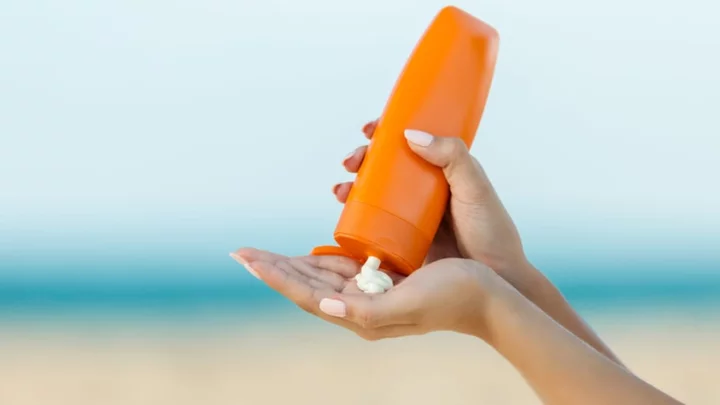
4 of the Best Sunscreens, According to Dermatologists
Protect your skin all year-round with the best sunscreens recommended by experts.
1970-01-01 08:00
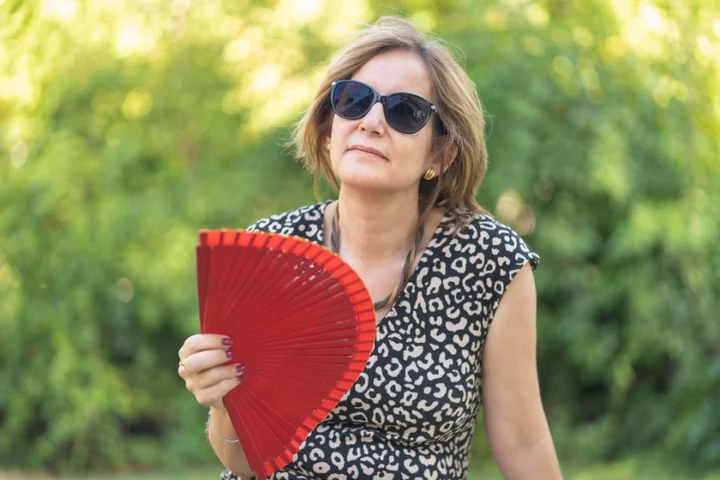
Struggling with menopause symptoms in the heat? An expert shares tips
Heatwaves can be uncomfortable at the best of times, but what if you’re already having hot flushes? Dr Naomi Potter, founder of Menopause Care and co-author of bestselling book, Menopausing, with Davina McCall, points out that eight in 10 people who go through menopause experience symptoms like hot flushes – a sudden surge of heat, often accompanied by redness and sweating. Night sweats and trouble sleeping are also common during perimenopause and menopause – not the sort of things you want to be dealing with when a heatwave hits. “The increasing temperatures can make hot flushes and night sweats worse, and make it harder to cool down when you do experience them,” says Potter, explaining that the lack of oestrogen associated with menopause affects the part of the brain that helps regulate body temperature. “If you’re already hot and sweaty, then having a night sweat or hot flush can just make everything worse and uncomfortable.” Here’s her advice for getting through the summer heatwaves… Travelling “Public transport can be awful at the best of times in the heat, especially when travelling on tubes, trains and buses where you’re cramped in, so if you experience a hot flush while travelling, it can be extremely unpleasant,” Potter says. “Try carrying water and a small fan, to give some comfort in these moments, if just for a short relief.” If you can, invest in a water bottle designed to keep liquids cold, so you’ll always have something cool to sip when you need to. Be drink savvy Speaking of drinks, Potter also suggests trying to limit alcohol, coffee and sugary beverages, especially if menopause symptoms are proving troublesome. Iced tea and water are ideal options. “During the summer, you’re more likely to be dehydrated, and alcohol, coffee and fizzy drinks worsen dehydration,” she explains. “So it’s worth bearing that in mind and staying hydrated with water.” Sleep Menopause might already be impacting your mood and energy levels, so sleepless nights can be a double whammy. “In the case of night sweats, you’ll often experience broken and interrupted sleep, which has a knock-on effect and impact on lifestyle and work the next day,” says Potter. “Create a cool sleeping environment by wearing light breathable bed clothes and have a spare by the bed in case you wake up sweaty, so you can change without having to properly wake up to find new clothes,” she suggests. Plus, a well-positioned bedroom fan will be your summer best friend. Dress light It goes without saying that clothing also affects temperature – so if hot flushes are bothering you, tweaking your wardrobe could certainly help. Potter suggests dressing in “lightweight, breathable fabrics” such as cotton or linen. Plus, a light pair of cycling shorts/long knickers under skirts and dresses can help massively with sweating and discomfort at this time of year. Get the right support Heatwave or no heatwave, menopause doesn’t have to mean suffering in silence and just soldiering on if symptoms are impacting you. “If somebody is having symptoms, then it is definitely worth seeing their GP because there’s lots that can be done,” says Potter. “And if you have a menopause-friendly workplace, it is definitely worth talking to [managers] because with recently headlines, many workplaces are much more supportive of the menopause. “I think it’s vital that conversations like this continue,” Potter adds. “Without speaking about experiences, then there is no way for people to realise that this is a normal life event, and there is help if it is required.” Storing HRT in the heat Finally, if you are taking hormone-replacement therapy (HRT), make sure it’s being stored correctly when temperatures soar. “Most HRT should be stored at room temperature. If this is the case with yours (it will say on the side of the packaging), do not refrigerate or freeze it. Instead, storing it in a cool dark place, away from direct light, should be fine,” says Potter. You will want to keep it away from excessive temperatures though – basically anywhere that can get particularly hot when it’s sunny, such as inside cars, on window ledges. “And aircraft holds,” Potter adds, “where temperatures are unknown and can rise rapidly.”
1970-01-01 08:00
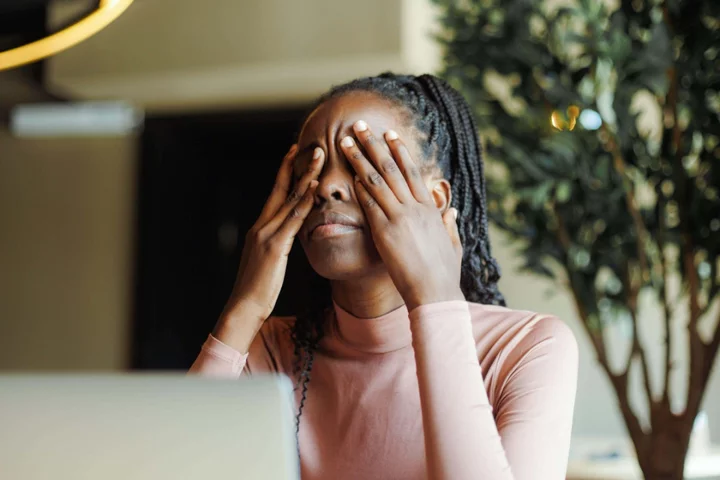
Men and women with migraine both have increased risk of stroke – study
Women and men who experience migraines have an increased risk of having the most common type of stroke, research has suggested. Additionally, women alone may carry a further risk of heart attack and haemorrhagic stroke (bleeding in or around the brain). People diagnosed with migraine are believed to have a higher risk of experiencing a heart attack or stroke before the age of 60. Migraine was associated with a similarly increased risk of ischemic stroke among young men and women Cecilia Hvitfeldt Fuglsang, Aarhus University Previous research had suggested the increased risk of ischemic stroke – when a blood clot blocks a blood vessel to the brain – mostly affects young women. However, it was unclear whether women with migraine also carry a higher risk of heart attack and haemorrhagic stroke compared to men. Cecilia Hvitfeldt Fuglsang, of Aarhus University, Denmark, and her team looked at Danish medical records collected from 1996 to 2018, from people aged 18 to 60. They identified men and women with a history of migraines and compared their risk of a heart attack and ischemic and haemorrhagic stroke before the age of 60 to the risks faced by people in the general population without migraine. Hvitfeldt Fuglsang said: “Migraine was associated with a similarly increased risk of ischemic stroke among young men and women. “However, migraine may be associated with an increased risk of myocardial infarction and haemorrhagic stroke only among women.” The findings suggest both men and women with migraine had a similarly increased risk of ischemic stroke. However, women with migraine may also carry a slightly higher risk of heart attack and haemorrhagic stroke, compared to men with migraine and the general population. Women are more greatly impacted by migraine, especially since the condition is predominantly diagnosed in women, the researchers suggest. The researchers point out that since they used prescription drug records to identify patients with migraine, they may have missed untreated people, which could have resulted in an underestimation of the contribution of migraine to these health problems. The findings are published in the Plos Medicine journal. Read More Charity boss speaks out over ‘traumatic’ encounter with royal aide Ukraine war’s heaviest fight rages in east - follow live Less than half of children ‘have received a meaningful financial education’ Harry Potter star Miriam Margolyes makes British Vogue cover debut aged 82 Toff: Drinking mindfully is a gift to yourself
1970-01-01 08:00
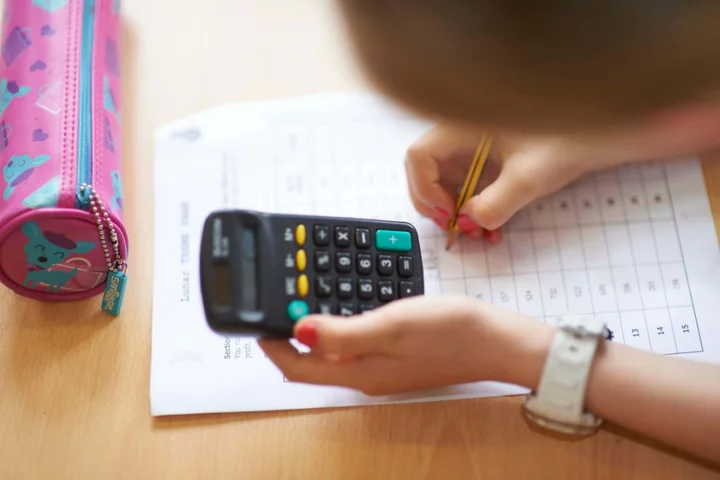
Less than half of children ‘have received a meaningful financial education’
Less than half (47%) of children and teenagers aged seven to 17 have received a meaningful financial education, according to a Government-backed body. The Money and Pensions Service (MaPS) estimates from its findings that around 5.4 million children across the UK do not have the money skills they will need in adulthood. Children living in social housing, rural areas and in lower income households were found to be less likely to have received a meaningful financial education. And children with parents or carers with mental health conditions tend to be less likely to have received a meaningful financial education than the UK average, the findings indicate. The measure of meaningful financial education is based on the percentages of young people who recall receiving financial education at school that they considered useful, and/or received regular money from parents or work, with parents setting rules about money and handing over responsibility for some spending decisions. Research was conducted for MaPS between late summer and autumn 2022 across the UK by Critical Research, among more than 4,700 children and young people aged seven to 17 and their parents or carers. The proportion of children and teenagers found to have received a meaningful financial education is similar to 2019, when the figure was 48%. The report said: “When interpreting these results, it is worth remembering the disruption to education and normal life caused by the Covid-19 pandemic potentially limited opportunities for children to receive a meaningful financial education at school and/or home over the last three years. According to the latest findings, a third (33%) of children recall learning about money in school and finding it useful, and nearly a quarter (24%) have received key elements of financial education at home. It is worth remembering the disruption to education and normal life caused by the Covid-19 pandemic Money and Pensions Service report Only 10% reported having both, suggesting that children and young people tend to receive meaningful financial education either at home or at school and not as “joined-up” financial education, the report said. Younger children aged seven to 11 continue to be less likely to have received a meaningful financial education than older children aged 16 to 17, according to the report. Children in Scotland are the most likely (52%) to have received a meaningful financial education, the report indicated, followed by those in Wales (51%), England (46%) and Northern Ireland (43%). Those in Wales (79%) are more likely than those living in the UK (71%)as a whole to receive regular money from parents/carers or work, according to the research. As part of its UK strategy for financial wellbeing, released in 2020, MaPS is aiming for two million more children aged five to 17 to receive a meaningful financial education by 2030. It is urging parents to talk to their children about money and combine it with everyday experiences, such as food shopping, budgeting and wages from a part-time job. Our experiences in childhood prepare us for adulthood and learning about money is no different Sarah Porretta, Money and Pensions Service To help with this, MaPS offers free resources such as “talk learn do“, an online tool that helps parents to start the conversation. The MaPS, which is sponsored by the Department for Work and Pensions (DWP) and funded by levies on the financial services industry and pension schemes, added that teachers, school leaders and governors should work together to deliver financial education in classrooms. It is also calling on financial services and funders such as charitable trusts to increase their investment in the delivery of financial education. Sarah Porretta, executive director at MaPS said: “These figures will alarm everyone in financial education because more than five million children could be going without. “Our experiences in childhood prepare us for adulthood and learning about money is no different. It becomes a part of daily life and our financial decisions can bring real benefits and profound consequences, so it’s crucial to learn from a young age. “The race is on to educate the nation’s children and everyone, from banks and building societies to foundations and financial institutions, has a big part to play. “Parents and schools can also make a huge difference by combining money skills with everyday experiences, both inside and outside the classroom.” Read More Charity boss speaks out over ‘traumatic’ encounter with royal aide Ukraine war’s heaviest fight rages in east - follow live Harry Potter star Miriam Margolyes makes British Vogue cover debut aged 82 Toff: Drinking mindfully is a gift to yourself Should you sleep naked? Heatwave myths debunked
1970-01-01 08:00
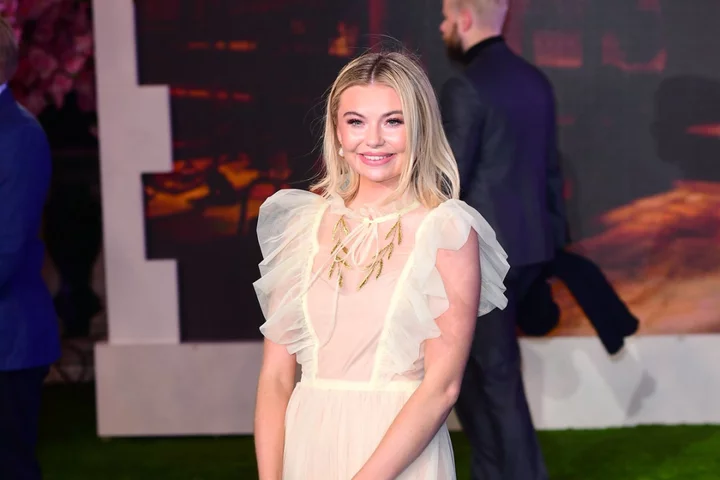
Toff: Drinking mindfully is a gift to yourself
When you think back to Made In Chelsea’s heyday, it seemed to be all champagne, kisses, debauchery and parties. But Georgia Toffolo, 2017 Queen of the Jungle and close pal of Stanley Johnson, says she often wasn’t drinking champagne at all. “We were always photographed with glasses of champagne in our hands, but mine was normally a non-alcoholic version,” the 28-year-old explains. “I don’t know whether people really know this.” At that time, the nation’s relationship with alcohol was in the spotlight, and how well we looked after our wellbeing became more important. Things began to change around her, says Toffolo. “People became more aware of their habits – both negative and positive. And as I was in my early 20s, I was able to ride that wave. “My attitude to wellbeing has changed hugely. I try to get balance and moderation, which is a constant battle, whether I am looking at how I eat, drink, work, or exercise. In my early 20s, it was so manic and I tried to work all the hours God sent, so the theme of my mid-20s has been trying to find moderation,” she explains. That moderation has become pertinent to her drinking habits. “I am a mindful drinker. I have been drinking since I was 18, but over the past three years, I have really tried to be more mindful.” She’s not the only one. According to new research by Harrogate Spring Water, 61% of adults are intending to try drinking in moderation in the coming months – a campaign Toffolo is supporting by debuting a new 0% summer cocktail, The Royal Raspberry Spritz, at Royal Ascot on Tuesday, June 20, at The Harrogate Spring Water Mindful Drinking Bar. A lot of people, Toffolo says, “are interspersing alcoholic drinks with non-alcoholic drinks, which is exactly what I do. “Ascot is like my Christmas. I go every day of every year but it can be a really long week,” she explains. “People go racing for so many different reasons, but you want to be on flying form. I drink loads and loads of water, feel super hydrated and feel great the next day. I spruce it up with a bit of basil or elderflower.” And because she sticks to mindful drinking, hangovers are a thing of the past, says Toffolo. “It doesn’t feel like it’s a chore, it doesn’t feel like I am losing out on anything, it is a gift to yourself. My mindset and my relationship with alcohol is so much healthier.” Read More Charity boss speaks out over ‘traumatic’ encounter with royal aide Ukraine war’s heaviest fight rages in east - follow live Should you sleep naked? Heatwave myths debunked 7 hay fever hacks to ease your symptoms this summer The pests you really don’t want invading your garden and how to deter them
1970-01-01 08:00

Biparjoy: India, Pakistan evacuate thousands ahead of cyclone
Biparjoy - a cyclone over the Arabian Sea - is forecast to make landfall on Thursday evening.
1970-01-01 08:00
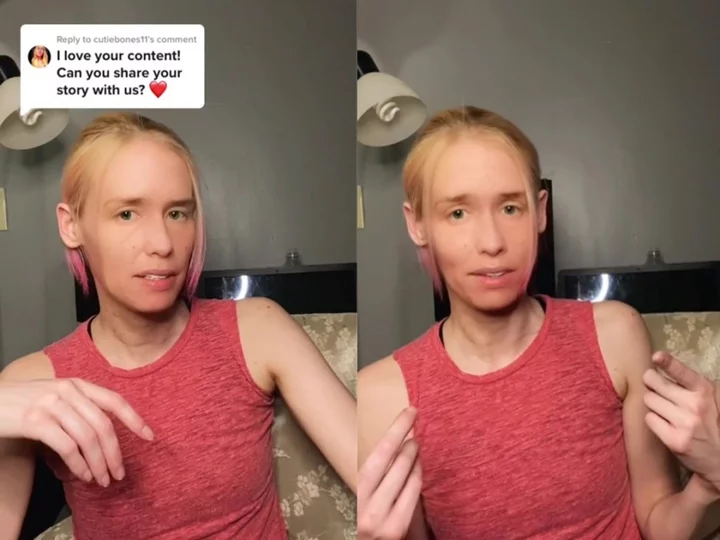
Woman who was pronounced dead for three minutes due to heatstroke describes what experience felt like
A woman who says she was pronounced dead for three minutes after battling with heatstroke has reflected on the experience, and the “strange anomalies” she has experienced since. When Jade, 36, visited a friend during a summer afternoon in Green Bay, Wisconsin, she didn’t expect for her life to be hanging in the balance only hours later. According to Jade, on the day in question, the temperature reached 89.6F, and with the high humidity, it made it feel “unbearable.” Soon after, she started experiencing frequent bouts of nausea, dizziness, dry mouth and exhaustion, which caused her to collapse on the living room sofa. As Jade was rushed to the hospital, medics pronounced her dead for three minutes and said the culprit was heatstroke. Now, in a bid to raise awareness, she’s shared her story on TikTok, where she’s received more than 191,000 views and over 20,000 likes, and where she said the experience has made her “unafraid” of death. “I had experienced an extreme fear of dying prior to this incident, but when it actually happened, I had zero fear,” the content creator, from Wisconsin, told NeedToKnow.co.uk. “I remember feeling consistently yucky and really gross. I was rundown, lethargic and sick to my stomach, with my mouth bone dry. “I went out to smoke and the moment that I finished and stood up, I knew I was in trouble. My priority immediately became getting back inside and I don’t think I understood at this point that I was dying, but I did understand that I was going down.” Jade recalls stumbling into the apartment and slumping onto the couch, before making a gurgling sound. She said: “Everything must have happened in a matter of moments, but it felt like much longer and this profound feeling of utter sickness hit me like a tonne of bricks. My head felt like it was inflating, yet my entire body as if it was shrinking. I had never known anything like it before. “It made me completely okay with dying because I wanted to sleep forever. Then, everything went black and that was the moment I knew I was about to pass away.” Jade was rushed to St Vincent’s hospital via ambulance, where she was revived via a defibrillator. As she arrived, she fell in and out of consciousness, but imaging tests of her head were carried out, along with blood tests and electrocardiograms, a test to check the heart’s rhythm. Over the next four days, she received injections to prevent blood clots and soon, medics told her she had been pronounced “dead” for three minutes on arrival with heatstroke. In the clip, she reflects on the experience and the “weird” occurrences which have happened to her since. Users flocked to the comments to share their reactions, with many detailing their own similar experiences. “I fainted TWICE that summer,” one person said, while another said: “I was pregnant that summer. The heat was HORRIBLE!!!” “Your story was very interesting. Glad you’re safe,” another person added. “Was it scary? What did you see? I really panic about the thought of death,” someone else asked. Jade was born with Wolff Parkinsons’ White and postural tachycardia syndrome, which both cause abnormalities with increased heart rate. Often, she feels like she’s going to “throw up” her heart and sometimes experiences extreme shakiness as well as fainting spells. Due to this, she finds intense heat triggers these episodes and while her near death experience in July 2011 hasn’t made these worse, she believes they were a contributing factor. “My symptoms are still mild, but I have been getting new ones, such as a low grade fever and muscle weakness,” she said “I’m not sure if these are related to the heatstroke. “I’m still waiting for a final diagnosis, as this has only occurred after my incident, but I will always fight for myself and my life.” Since then, Jade has also suffered with frequent seizures, which she had never had prior to the incident. She said: “At first, I thought it was heatstroke again, but I just passed out and doctors believe it’s because I’m still so exhausted from all the anxiety of almost dying. But, I have been admitted a few times for these and I’ve had tests such as MRIs and more blood work done, as well as seeing a neurologist and I’ve been diagnosed with epilepsy. “Now, I don’t have them so much, but I’ve been in touch with other near death experience survivors who said they had seizures for a while after, but then they suddenly stopped.” Jade has also experienced other “strange anomalies” such as not being able to wear regular watches, as they would stop working once she put them on. She said: “It wasn’t something that happened before and the only watches that are safe are expensive smart watches. I’ve given up on them entirely, but vape pens also shut down even with a full battery. “I’ve also had a lot of spooky things happening, such as hearing voices and seeing things that aren’t there. Sometimes it’s been whispers or dark hazy figures and I began recording my home because I was petrified that I was losing it. I believe this is telling me that life continues after death.” She continued: “I feel like I’m in a special club and it’s made me learn how to take better care of myself, as well as valuing life more. I don’t live in fear of death and I know that when my time comes, any fear will melt away like it did before. “The biggest lesson I’ve learned is that it is absolutely true what they say - the fear itself is always worse than the thing we actually fear.” Read More What is the difference between heat exhaustion and heat stroke? How to keep your pet cool and healthy during a heatwave How to tell if you’re seriously dehydrated, as UK temperatures soar
1970-01-01 08:00
